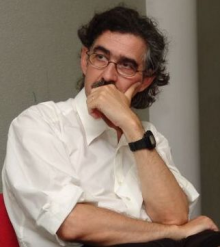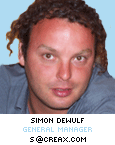
Keynote Speech

|
Sorin Solomon |
Modelling Individuals, Institutions, Markets, Societies and Economies in terms of Agents and their Interaction Networks
Long after the discovery of atoms and molecules it was still customary in science to formalize mathematically a collection of many similar objects in terms of "mean field" continuous functions in space and time representing the local average of their individual properties.
In fact, this "mean field" / continuum / linear way of thinking is what kept the classical sciences as independent sub-cultures. Indeed, the great conceptual jumps separating the various fields and the accompanying paradoxes connected to the nature of life, intelligence, trade, credit, growth, market, society, culture, arise exactly from the failure of the "mean field" and "average" assumptions. When "More Is Different" (the title of the article published 30 years ago by Nobel Laureate Phil Anderson) the singular, extreme, very rare events become crucial and life emerges from chemistry, conscience from life, social institutions /firms/markets from conscient interacting individuals, economies from firms etc
One can think about the "elementary" objects belonging to the "simpler" level (say firms in microeconomics) as the nodes of a network and about the "elementary" interactions between them as the links of the network. The dynamics of the entire system (say macroeconomics) is then emerging from the interactions of the individual links and nodes. The global features of the resulting network correspond to the collective properties of the emerging system: (quasi-)disconnected network components correspond to (almost-)independent emergent economic branches; scaling properties of the network correspond to power laws in the firms distribution, long-lived (meta-stable) network features correspond to critical slowing down activity. The knowledge of the collective emerging features of the network allows one to devise methods to expedite by orders of magnitude desired processes (or to delay or stop un-wanted ones). The mathematical tools implementing it are being developed presently and include multi-grid and cluster algorithms.
Curriculum Vitae
Present and past positions, tasks etc. :
Professor, Racah Institute of Physics at the Hebrew University of Jerusalem.
Head of the Multi-Agent Systems Unit at the Institute for Scientific Interchange Torino.
Chair of the EU Commission Expert Group on Applications of Complexity in Science.
Chair the first and the 5th European Conferences of Complexity Science.
Scientific Coordinator of "General Integration of the Applications of Complexity in Science" (*GIACS*); "Common Complex Collective Phenomena in Statistical Mechanics, Society, Economics, and Biology" (CO3); "Dynamic Analysis of Physiological Networks"(*DAPHNet*).
Awards: Levinson , St Francis Xavier , Bantrell (Caltech), J.F. Kennedy, Weizmann, Keren Kayemet.
Books: "Microscopic Simulation of Financial Markets, From Investor Behavior to Market
Phenomena" Academic Press, NY 2000; "Anatomy of Successful Products",
Edison: TA 1999, "Cracking the Ad Code"– Cambridge U P, 2009.
Committees: Center for Complexity Science, ComPlexUs, Int. J. Mod.
Phys.C, J. Stat. Mech., "New Economic Windows" Series, Springer- Verlag.
You can download his full CV here ![]()
Invited Speech

|
Simon Dewulf |
Sustainability of re-search: Property's“ Function relations as a base for technology transfer.

 Tel: 972-2-6585761
Tel: 972-2-6585761 Fax: 972.2.540.0022
Fax: 972.2.540.0022 Email:
Email: 







